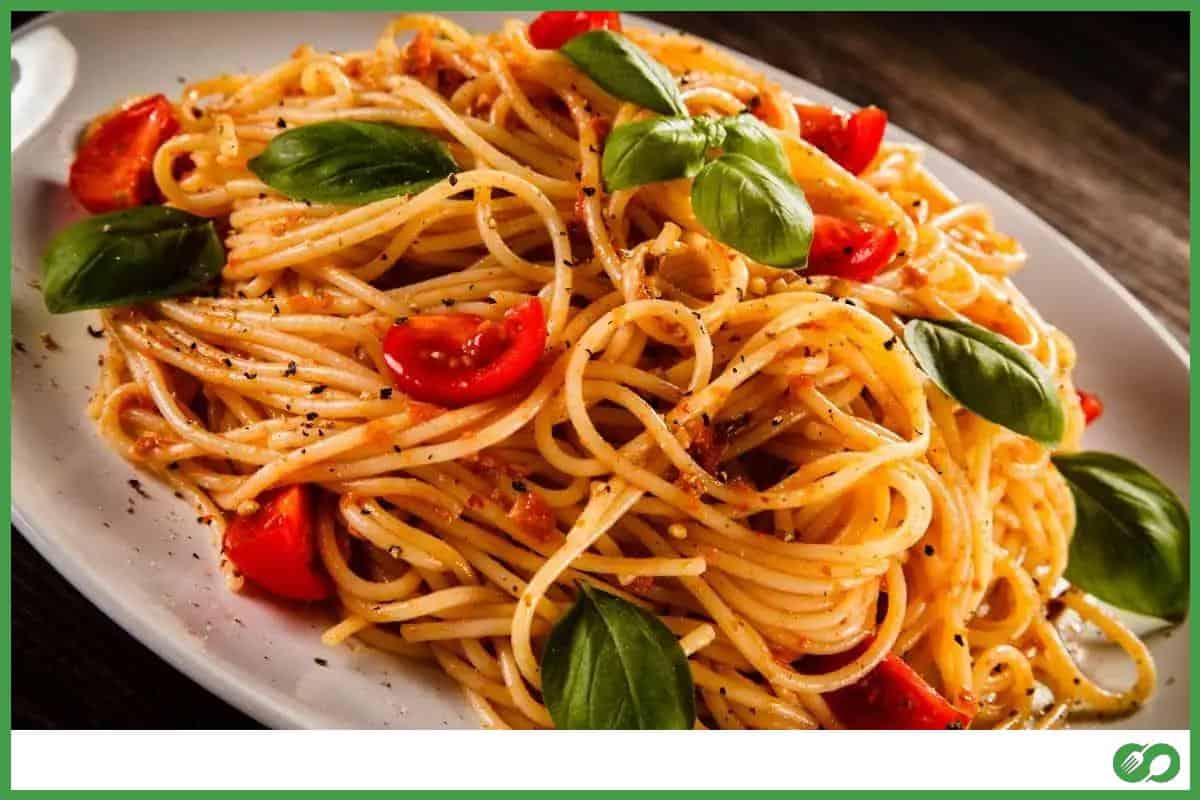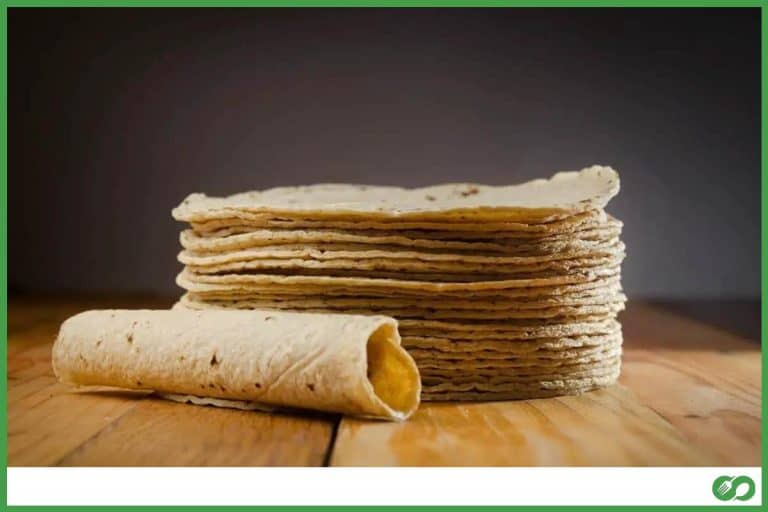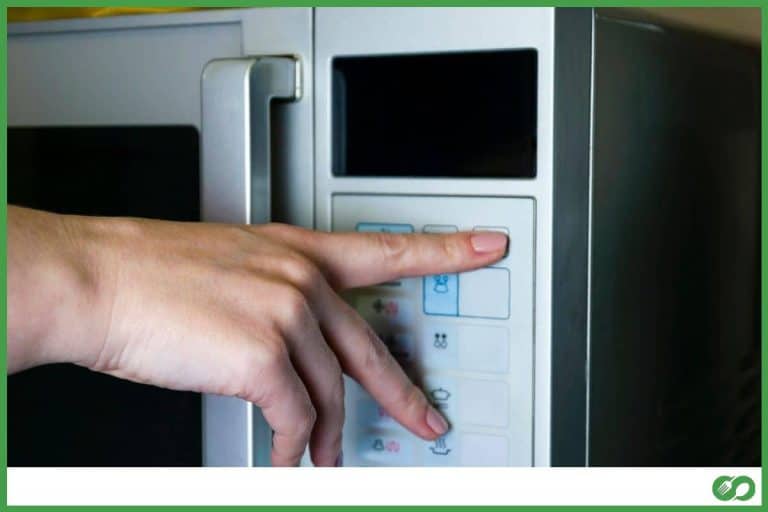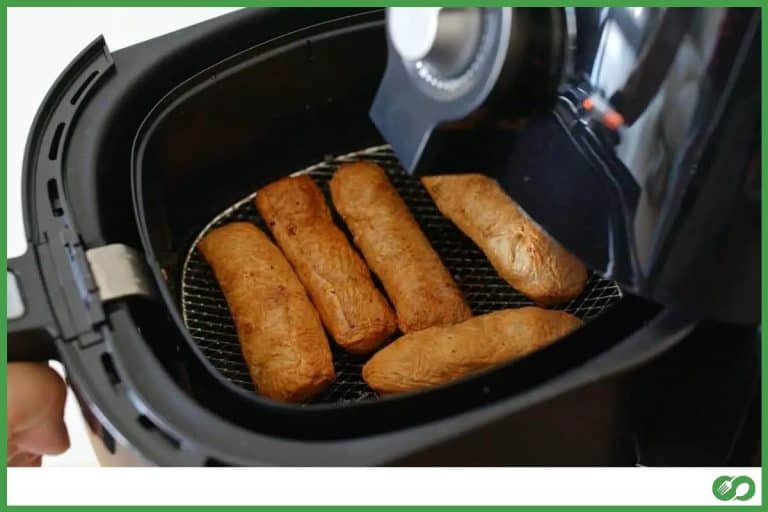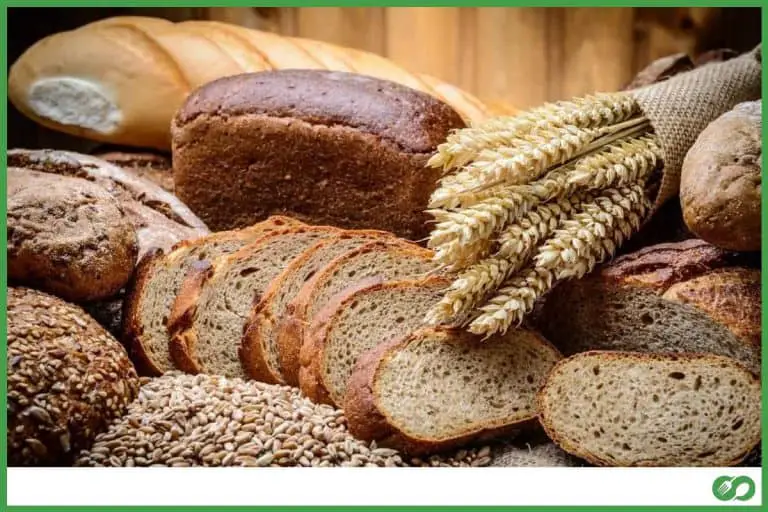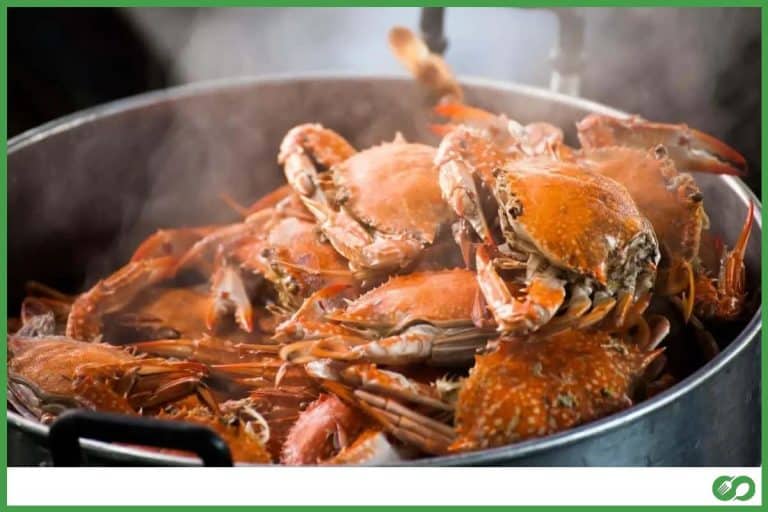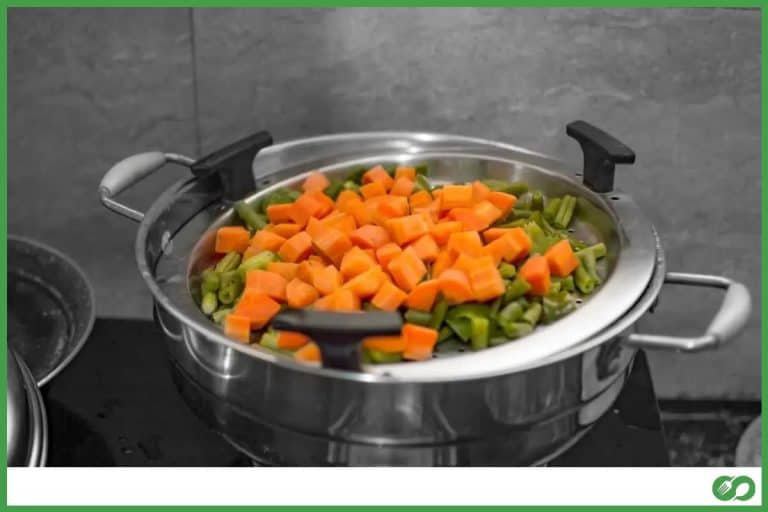Can You Reheat Pasta? (Step by Step Instructions)
This post may contain affiliate links which means that, if you choose to make a purchase, I may earn a small commission at no extra cost to you.
Can you reheat pasta? And what is the best way to heat it up for a tasty dinner?
Leftover pasta can safely be reheated in the oven, microwave, or on the stovetop. You can choose to reheat pasta stored both in the fridge and the freezer. Reheating the dish on the stovetop yields the best result since it maintains moisture. Add some water if you choose to reheat in the microwave to keep the dish moist, or cover with tin foils when reheating in the oven.
Are you simply reheating leftover spaghetti from last night or are you pulling an entire sheet of Nana’s homemade manicotti from the freezer? Take these things into consideration before reheating to ensure yourself a tasty meal!
Storing Your Dish
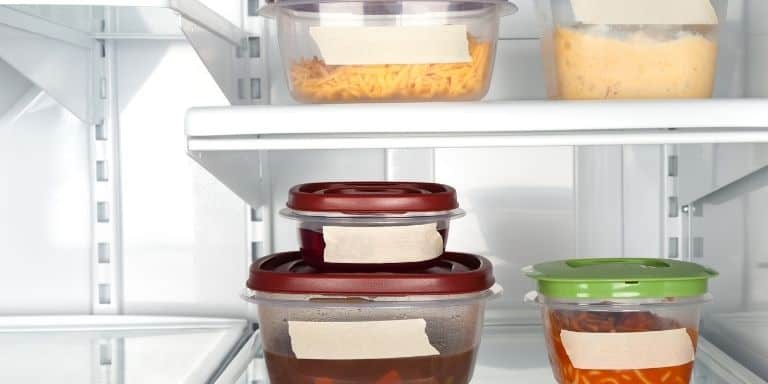
When storing cooked pasta, it should be slightly cooled and put in an airtight container before being stored in the refrigerator. Most store-bought Rubbermaid or Tupperware containers work just fine. Just don’t lose the lids!
The pasta will remain safe to eat for 3 to 5 days when stored properly in the fridge.
It’s best to store sauce and pasta in separate containers if possible. You’ll have the most success this way. Remember that pasta and sauce will reheat at different temperatures and for different lengths of time.
If you are going to store pasta in the freezer, simply drizzle the cooled pasta with a little olive oil and toss. This prevents it from sticking. Frozen pasta can be stored in an airtight container for up to two months in the freezer. The same applies here, any storebought Rubbermaid or Tupperware will do the trick.
It’s also best to freeze your sauce separately as well, in an air-tight container. You can even use a sturdy, freezer bag as long as it’s sealed tightly.
Cooked pasta dishes or casseroles can be stored safely in the fridge for up to four days. As with freezing a dish, store it in an airtight container. Cooked pasta in the freezer will remain fresh for up to two months.
And with storing all your food, it’s wise to label it and give it a date. It will give you and your family peace of mind that they are eating something that has not expired. And that is the most important thing.
Easy Reference Cooking Table
| Temp | Time | Expectations | |
| Microwave | Med heat or power | 1 to 1 1/2 minutes with increments of 15 seconds | Pasta may dry out |
| Stovetop | Pot of water at full boil | 30 to 60 seconds with increments of 15 seconds | Pasta should be moist |
| Oven | 325 F or 162.7 C for refrigerated | 20 to 30 minutes | Pasta may dry out |
| Oven | 350 F or 176.6 C for frozen | 1 hour to 1 hour and 20 minutes | Pasta may dry out |
Reheating Your Plain Pasta
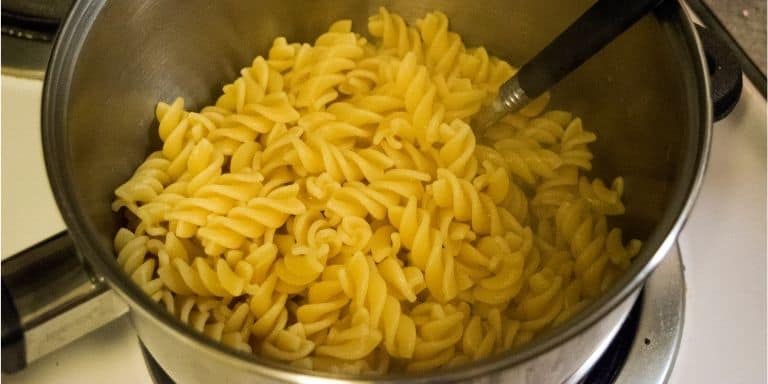
As a rule, plain pasta does not reheat well in the oven as it tends to dry out. So best to use the stovetop or microwave.
Stovetop For Both Refrigerated and Frozen Pasta
- In a pan, bring water to a boil after adding a pinch of salt. Use enough water but you will not need as much as when you first cooked the pasta. Just enough to cover it should do the trick.
- Boil your pasta for roughly 30 to 60 seconds. If it’s not heated through, continue boiling and check every 15 seconds or so.
- Frozen pasta may take a little longer to warm completely so just be patient
- Drain and serve with your favorite sauce and maybe some grated cheese!
Microwave for Refrigerated and Frozen Pasta
- Put your leftover pasta on a microwave-safe dish. Cover with plastic wrap, but leave a small corner open just enough to allow steam to have a way out.
- If you are reheating the pasta in the same container you stored it in, it’s important not to keep the cover on too tightly. This can prevent the dish from exploding and making a mess!
- It’s also a good idea to put just a splash of water over your pasta before reheating in the microwave. This will ensure that the moisture remains with the food.
- Set your microwave to medium power and warm for roughly 1 to 1 1/2 minutes. Make sure your microwave’s turntable is working correctly.
- Check carefully to see if your dish is warmed enough. Steam can be very hot, so take caution.
- If your pasta isn’t warmed to your liking, simply reheat at 15-second intervals until you are satisfied.
- As with the stovetop, frozen pasta may take a little longer
- Your reheated pasta can be served plain or with your favorite sauce and cheese.
Reheating a Baked Pasta Dish

Baked pasta dishes reheat well in the microwave or stovetop. But if you are looking for that same baked taste, the oven may be your best bet. The oven will give it that first time around taste and texture. And it will smell fabulous at the same time!
Stovetop For Refrigerated and Frozen Pasta
- In order to reheat a baked dish on the stovetop, the pasta would have already had the sauce, etc on it and should have been stored in a heatproof plastic bag.
- Using a large pot, bring water to a boil. Be sure the pot is large enough to contain the bagged pasta.
- Making sure the bag is completely sealed and heatproof, drop it into the boiling water.
- Let the bag of pasta boil for about 1 minute. Be alert that times may vary due to the type of pasta dish you are reheating.
- Times will also differ if you are reheating frozen pasta.
- If after 1 minute, if the past is not warmed through, continue to boil in 30-second increments
- When satisfied, pour the pasta from the plastic bag into a serving bowl and enjoy.
Microwave For Regridgeraded and Frozen Pasta
- Put leftover pasta on a plate or microwave-safe dish. Be sure to cover with plastic wrap, leaving one small corner open for steam to escape.
- It still would not hurt to leave a splash of water on your pasta before covering it to ensure moisture stays put.
- Using the medium setting on your microwave, cook for one to 1/2 minutes, making sure that your turntable is working properly.
- Times may vary greatly for frozen pasta so best to check in 30-second increments
- Be careful when checking as the steam can get very hot. Better even to wear that oven mitt.
- When your dish is done, carefully remove it from the microwave, avoiding steam burns.
- Pour your reheated pasta onto a plate or serving dish and enjoy. Maybe with some nice bread this time around!
Oven For Refrigerated Pasta
- Preheat your oven to 325 F or 162.7 C
- Put the amount of pasta you wish to reheat in an oven-safe dish
- Cover the dish if it has one that can safely be used in high temperatures. If not, you can safely do so with tin foil, being sure to wrap it tightly around the dish. This will prevent your dish from drying out.
- In the preheated oven, place the pasta dish on the oven rack and set the timer for 20 minutes.
- To check the internal temperate of the pasta, simply place the tip of a knife in the center for roughly 10 seconds. If the knife is hot to the touch, it’s safe to say your dish is heated through.
- If your dish is not heated through, return to the oven and bake for about 10 more minutes depending on how warm you want it. You may have to do this in intervals with repeated checking. And remember that oven mitt!
Oven for Frozen Pasta
- If you are reheating an entire frozen dish, times and temps will vary
- Preheat your oven at 350 F or 176.6 C
- Take your frozen pasta dish directly from the freezer
- Cover the dish and bake it for one hour so it thaws through
- Now uncover the dish carefully as it will be hot.
- Bake for another 15 to 20 minutes until the surface of the dish begins to bubble.
- Check the center of the dish with a knife, while wearing oven mitts.
- If the pasta is warm enough for you, remove the dish from the oven safely and enjoy
Variations and Other Ideas
When it comes to reheating plain pasta and sauce, it is recommended that you heat them separately. Sauce may need to be stirred often and will heat at different temperatures.
The sauce should be warmed on the stovetop in a separate, covered pot on low heat to avoid burning. It can also be warmed in the microwave in a separate container. But be careful not to put the container on too tight as it can build up pressure.
If you are heating multiples, you will want to do this in several increments, especially when using the microwave. The microwave can tend to heat unevenly and possibly leave you with cold spots in your food.
You may need to adjust oven temperatures and times as well if you are heating up several dishes. A thick, layered lasagna will surely need more time than a simple cheese and sauce ziti dish. Even a hearty tuna casserole will heat differently so best to just keep an eye on it.
Good Luck and Bon Apetit!

